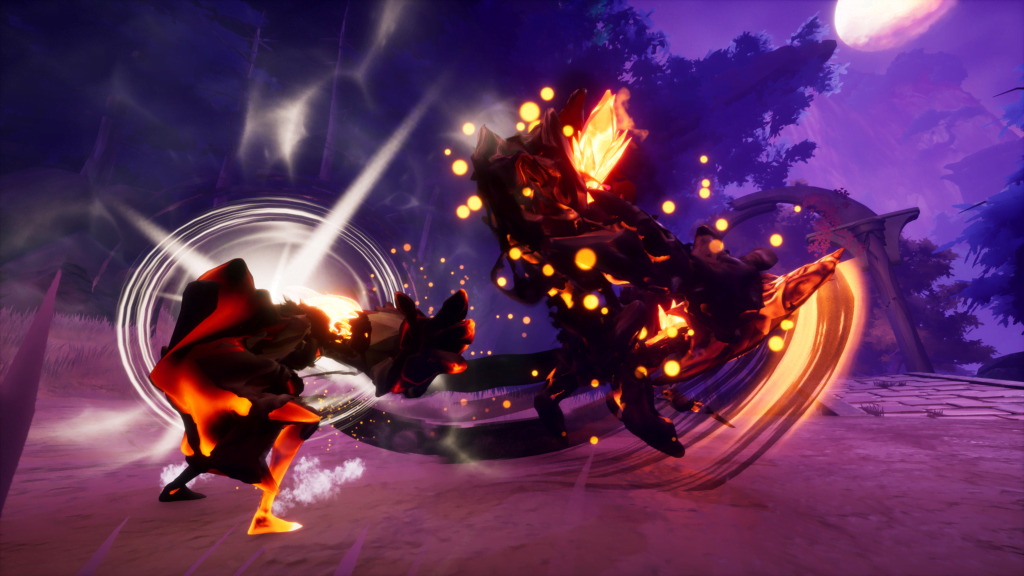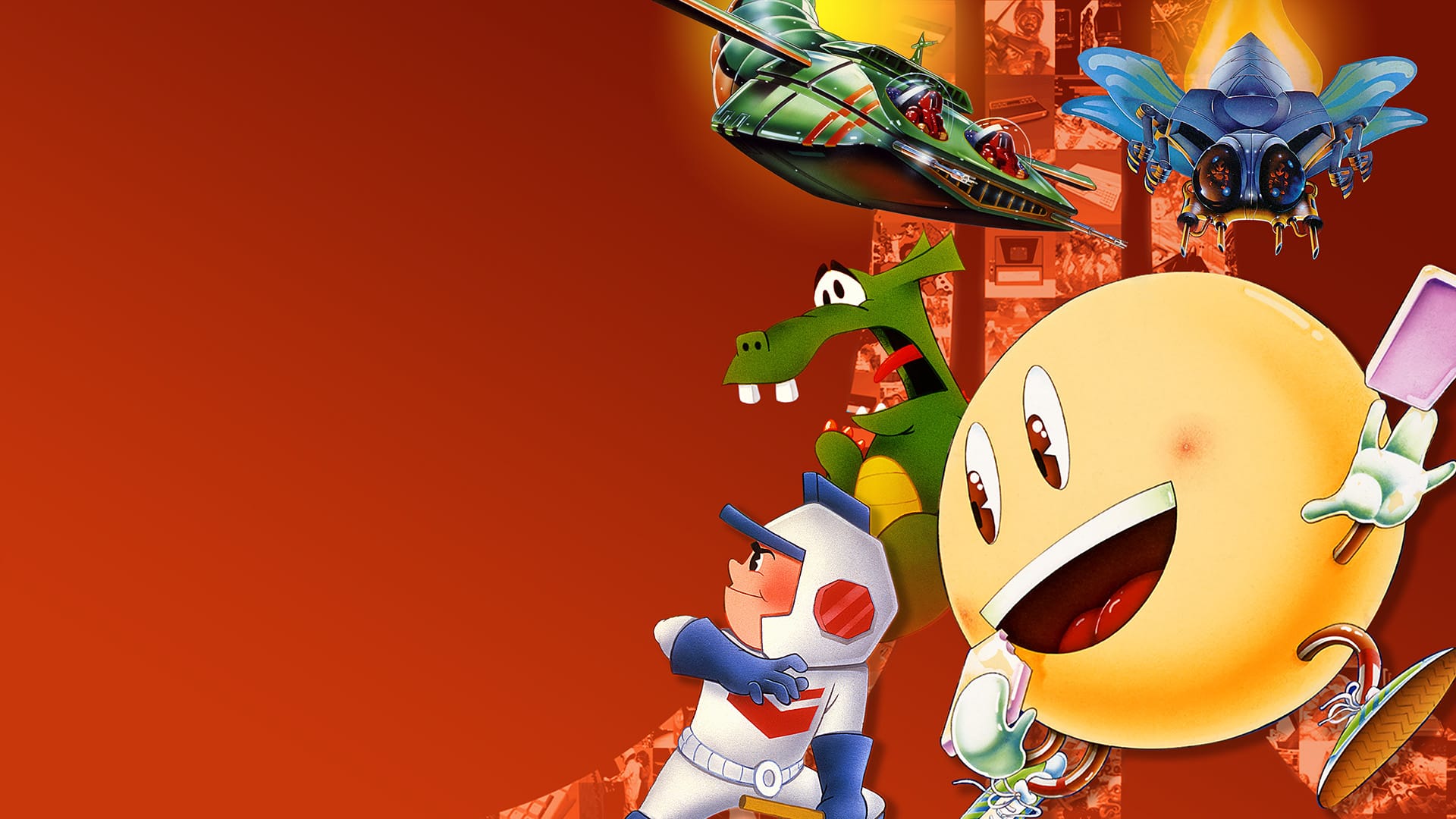One of the most difficult mechanics to get right is a good feeling parry. Deflecting attacks is always sick as hell to do, but making it feel good isn’t exactly straightforward. It’s a mix of things: the animation and how the camera frames it, the sounds, and the parry window itself. All of it has to congeal just so for it to feel good, feel right. This doubly applies when it is the central mechanic.
Strayed Lights is one such game. In Strayed Lights, parries are your weapon of choice. Every encounter is bested not by beating down your opponent but by deflecting their strikes to build energy and wear them down so you can dispel them with a single burst of light. It’s a game that understands the importance and challenges of making this focus accommodating and (mostly) succeeds at doing so.
Strayed Lights puts you in the role of a newly born light who finds themselves in a world beset by some corruptive force. Not long after their arrival, they’re attacked by a figure that steals their essence, weakening them considerably. Their once bright, ethereal form is reduced to a muted one: pitch-black with blue or red light erupting across their body, same as the rest of denizens currently occupy the world. It’s a story told without words and relatively few cutscenes. What little there is sees the protagonist encountering other beings of light — usually in some larger, warped form — and fighting them until they’ve calmed down.
The first I fought was a fellow light who decided to follow the protagonist as they went into some caves. The two characters moved through the first rooms together, albeit along different paths. Eventually the two were separated after being attacked, the lead light’s companion fleeing in fear. They end up surrounded by a horde of spider-like creatures closing in around them, shaking in fear all the while. Desperation causes them to transform, causing them to attack anything and everything in sight, friend or foe. Defeating them returns them to normal, free from their rage-filled form, and the two make their escape from the caves.

In another, a hulking figure stalks a forest chasing the wildlife, killing whatever they get their hands on. Defeating them leads to them returning to their natural form and being more gentle and careful with the wildlife. And in yet another scenario, a fellow light creates an illusion of a bright and vibrant version of the world that covers a specific space, the figure behind it giving themselves a more elegant (idealized?) form, reality flickering into view occasionally. The arc ends with the protagonist appealing to the illusionist to appreciate the world as it is (though seemingly doesn’t acknowledge the illusionist’s different form in the fake world).
In isolation, each of these little stories work well enough. They’re tiny arcs that tell self-contained stories about characters overcoming issues or fears. But put together, it’s hard to tell what message the game is trying to convey through them and how they relate. There’s an opaqueness to Strayed Lights‘ storytelling that doesn’t serve it particularly well because whatever threads tie it all together are buried beneath layers of obfuscation. I can’t say I had a good grasp on what was happening past a certain point. Things just sort of happen with little connective tissue. The end opens up very suddenly and I couldn’t escape the feeling I missed something. It’s clearly a story of light versus dark, but the surrounding context and narratives feel… lost. I’m not a stranger, nor opposed, to difficult or abstract storytelling, but I can’t say Strayed Lights‘ story left me feeling anything by the end.
Strayed Lights feels simultaneously very generous and weirdly specific with the parry timing. The majority of attacks are easy to deflect thanks to the strongly telegraphed tells each one has. Every swing has considerable startup. Enemies hold their strikes for a second once primed, giving you ample time to prepare and react. They always follow a clear rhythm, making it easy to dial in the timings to deflect each blow (and dodge the occasional unblockable attack). And if you screw up and get hit, you recover fast enough to start parrying again and, provided your color matches that of the enemy, you’ll regain whatever health you lost quickly. Occasionally, though, the timing feels more restrictive. Instances where I’m certain I pressed the button at the right time only to take a hit were common enough to make me second guess myself. It happened more in the late-game and during boss fights than most regular foes, where attack patterns become more complex and irregular with their rhythm.

The biggest issue is the muted feedback. Most deflections don’t have much “oomf” behind them. The sound of the strikes being bounced back is inconsistent in how loud it is, jumping between being clearly audible and easy to miss, contrary to most other games where the sounds of each deflection are pronounced and impossible to miss. It’s usually the final hit of the enemy’s combo that actually feels meaningful to parry because it puts them in a vulnerable state after knocking them back. Crucially, this seemingly only happens if you successfully parry every attack leading up to that final hit. Screw one up and you don’t get that satisfying finish.
When I think about what a good feeling parry looks like, I usually think of Unsighted and Lucah: Born of a Dream, two games that absolutely nail the power of disarming your foe. Lucah achieves it through the way the camera briefly zooms in and slows down the action, accompanied by a loud crack as the opponent crumples into a broken form. And Unsighted through the satisfaction of watching Alma swing her sword and send the foe flying across the screen, the same zoom in and slow down at the point of impact selling the moment as the opponent is left stunned.
But those are also games where a single deflection is enough to throw the enemy off-balance. A more direct comparison would be something like Sekiro or Wo Long, games where parries fill bars that open the opponent up for the final blow (or at least severely damage them). In both cases, the feel of the parry is dependent largely on sound and visual cues: the sparks that fly alongside each blow, the piercing sound of blades clashing against one another.

Strayed Lights‘ parries by comparison feel functional at best. The action itself still feels good in the way deflecting attacks always feels cool – the rhythmic aspects help especially since it gives fights a very choreographed feel when everything clicks — but there’s something missing to really make each parry feel significant and exciting.
What’s interesting about boss fights in particular is how they end. Upon filling your energy bar, you press a button and a series of quick-time event prompts play out. It’s interesting because it’s not a mode of play I see much these days. Admittedly I don’t play that many major triple-A games these days, so maybe it’s still plenty active in that space, but it still surprised me all the same. While quick-time events are mostly seen as a negative, in Strayed Lights‘ case, it works in its favor.
Strayed Lights is centered around playing defense. Your actual means of direct attacks are weak or limited use (basic attacks barely do any damage), which forces you to lean all the way in on parries. It’s thematically consistent since the protagonist is technically in a weakened state. Fighting foes that are larger and faster than they are, it makes sense to focus on a defensive approach instead of overpowering them in a straight fight.
The fights are designed around that and capture the feeling well. For as much as the game gives you ample opportunity to recover health, it’s still easy for mistakes to snowball. There were at least a few times I fell out of rhythm and instantly got destroyed. There’s no penalty for failure (you’re merely reset back to the nearest checkpoint), but it still gives fights tension and sells the scale of the opponents nicely.
If nothing else, Strayed Lights is good at making battle a spectacle. While the parries lack that extra touch to make them really pop, it’s never not cool to brush off massive attacks in succession. It’d be a bigger problem if the fights weren’t so lavishly designed, the sheer spectacle and bombast enough to carry Strayed Lights forward in spite of its story’s shortcomings.





